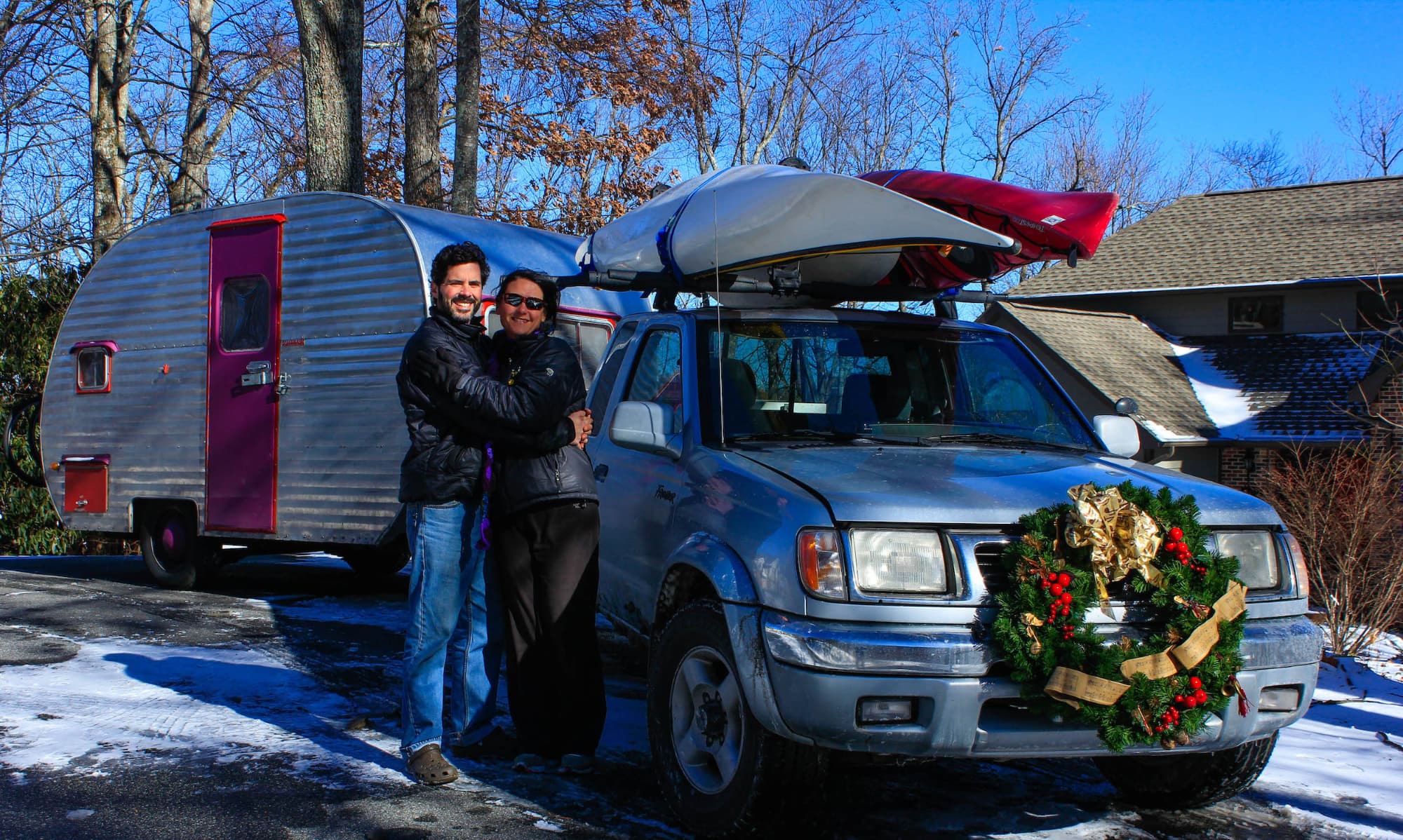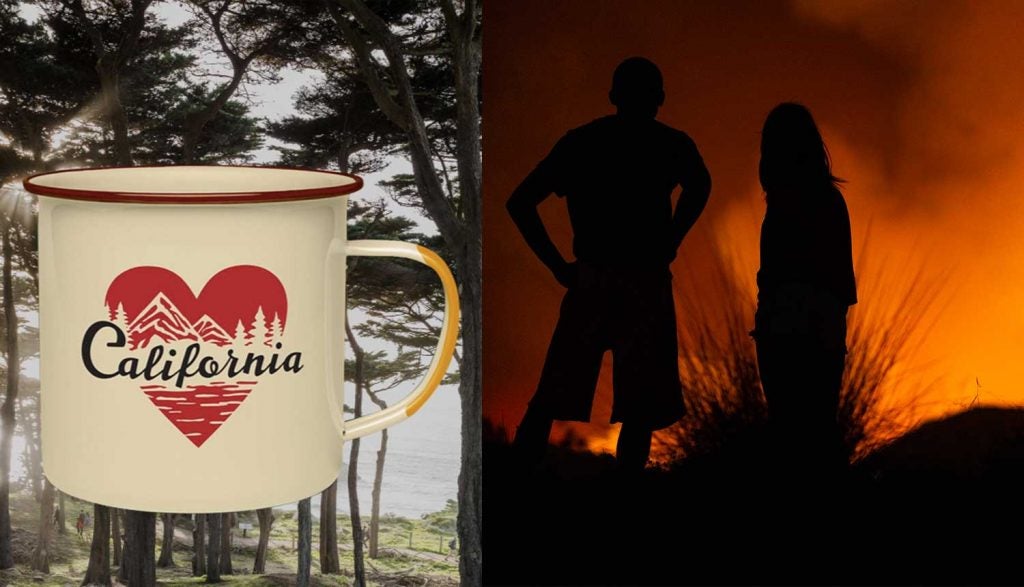Snow flurries whirl around our vintage “canned-ham” camper as we back it into our free national forest site for the next few days. Within minutes we’ve got it leveled, stabilized and ready for the night. We jump inside and fire up the kettle on our two-burner propane stove and our portable heater. Before the water even comes to a boil, our bones thaw and we strip off extra layers. Changing out of damp snowshoeing gear and into dry, fuzzy fleece before drinking a piping hot mug of Earl Grey is one of the simplest and most satisfying pleasures of winter RV living. It’s cold, wet and windy outside, but inside, our little camper feels like a cozy log cabin.
These are the nights when we can really celebrate the versatility of our camper. We love tent camping and the places that takes us, but sleeping on the ground in near freezing temperatures just doesn’t sound as appealing as it once did. With Hamlet, our travels can extend into the shoulder season of autumn and even winter. Perhaps, we are getting soft in our middle age, perhaps we have less to prove, but being in a beautiful, remote spot while also sleeping in a warm and cozy bed has really given me an appreciation for camping this way.
Our Best Tips & Tricks for Winter RV Living
While we’ve never spent a full winter set up in sub-zero temperatures, we love camping in the snow. In some winter months, we migrate to warmer climates, sometimes we travel abroad, but we always spend some part of the season traveling in wintery weather. Here are a few ways we prepare for and enjoy winter RV living.
Combat the Cold in the Camper

Keeping our canned ham camper warm involves more than just a portable heater, but that sure is useful.
Staying cozy while we’re winter RV living begins with our bed. We didn’t want to just rely on sleeping bags for our full-time life in Hamlet, we so made ourselves a very warm comforter for the bed. We put two fuzzy, fleece blankets together to make a duvet and stuffed it with our own down comforter. It’s so cozy, we can sleep in very cold temperatures. To pre-warm the bed on frigid nights, we put boiling water in a Nalgene and stuff it under the covers at the foot of the bed.
To stay warm when we’re up and active in the camper, we focus on our feet first. Fuzzy, slide-on, durable shoes (i.e., fur-lined CROCS) that we can leave at the camper door when we come in from the snow/mud are an absolute must to keep the floor clean and dry. To keep our feet warm in the camper, we often wear down booties—to us, these are 50 times better than your average slipper—and use small bathroom rugs on the floor.
Our most reliable tool for keeping warm indoors has been our Mr. Heater Propane Heater to keep us toasty while we read, write, or watch a movie. We never sleep with it on, as it would simply bake us out of the camper at night, but we always warm up the camper before going to bed. Note: Although it has a low oxygen sensor, we also have a carbon monoxide detector in the camper. Pull out your heater before you really need it and give it a test drive; always inspect the gas hose for wear and tear before turning it on for the first time.
Keep Stock of Your Winter Clothes
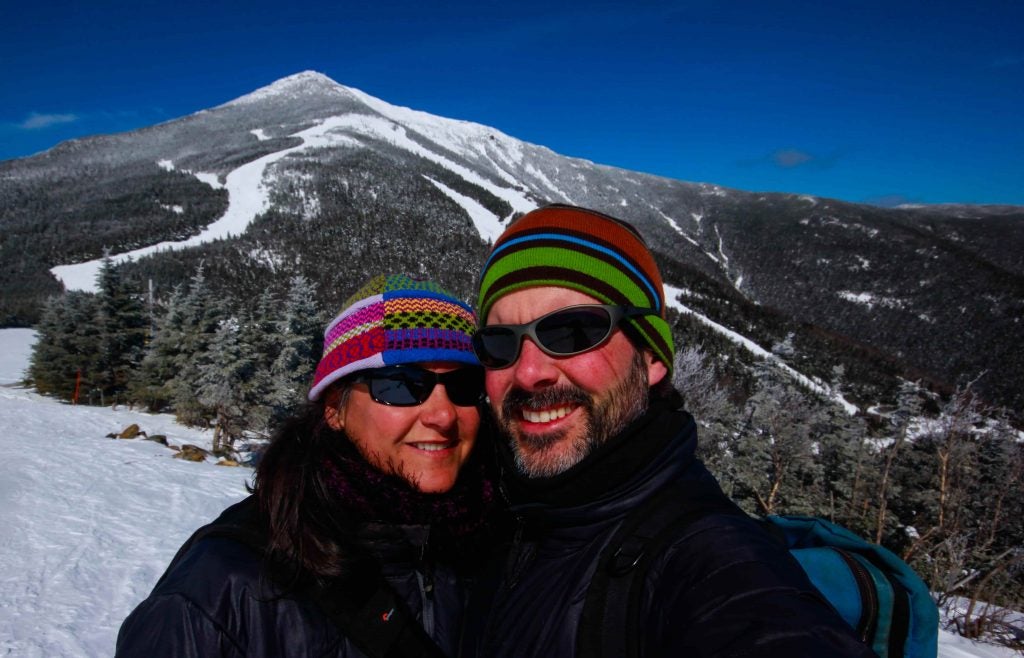
Hats, jackets, and sunglasses are only a few of the winter gear we prioritize as the seasons change.
Since we carry everything with us year-round, we keep our off-season clothes in vacuum seal bags inside waterproof tubs stored in the bed of our truck. When the seasons change and it’s time to bring them out, we do this close to a donation station like Goodwill. Inevitably, we will need to get rid of some items and it’s handy to be able to donate them immediately; and, possibly pick up some additional gear.
Stock Up on Hot Food and Drinks
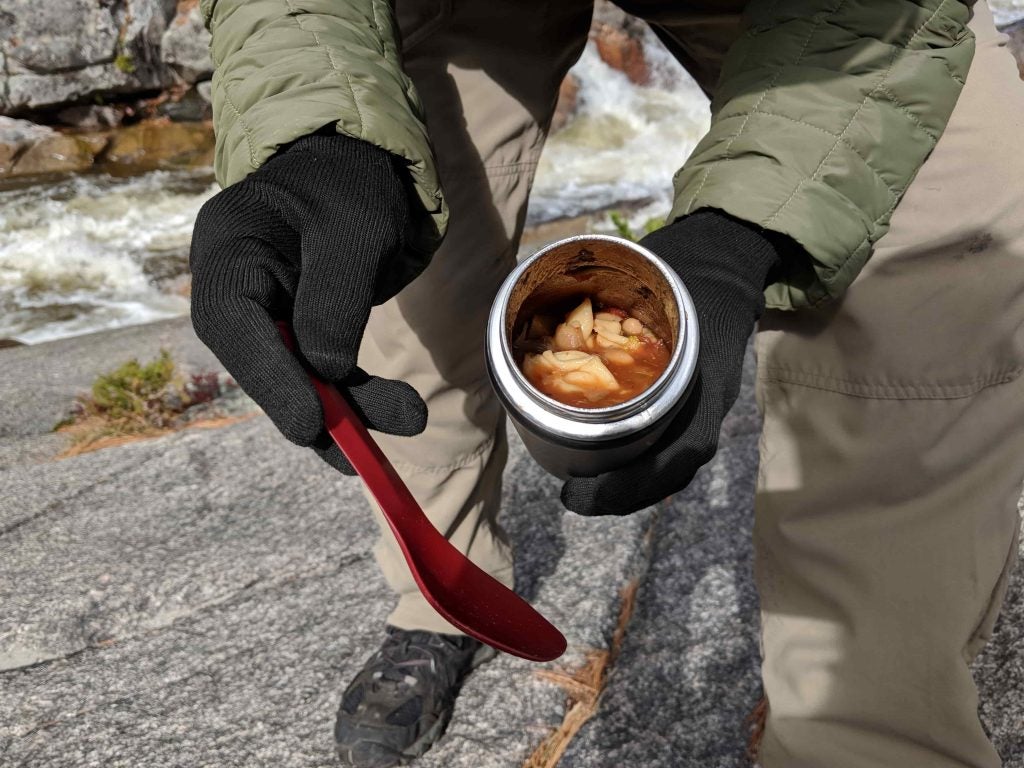
Hutch holds his thermos of hot vegetable soup on a cold day.
This may seem silly, but if you find yourself in a gorgeous remote location and you don’t have tea or hot cocoa to drink after a long, cold hike, you may find yourself driving to the nearest gas station or convenience store to find some. Firing up the stove to make a hot drink and changing into dry clothes in a warm camper can turn a cold, wet hike into the best day of your life. There’s nothing like eating a hot meal during a fall or winter hike. We fill our insulated mugs with piping hot soup or chili just before we head out and enjoy a soul warming meal in a sunny spot with a view.
A few winters ago, we developed a ritual that has helped us get out of bed and get moving on icy mornings with a hot drink. We pre-fill the kettle the night before and leave it on the stove. In the morning, Shari pops out of bed to turn on the kettle and the heater and then jumps back under the covers. By the time the kettle whistles, the camper is warm enough to get up, make breakfast and get on with our day. This sort of a habit keeps us warm and active on those bitingly cold mornings, and keeping ourselves stocked for these mornings is essential to winter RV living.
Keep your Safety Gear Handy
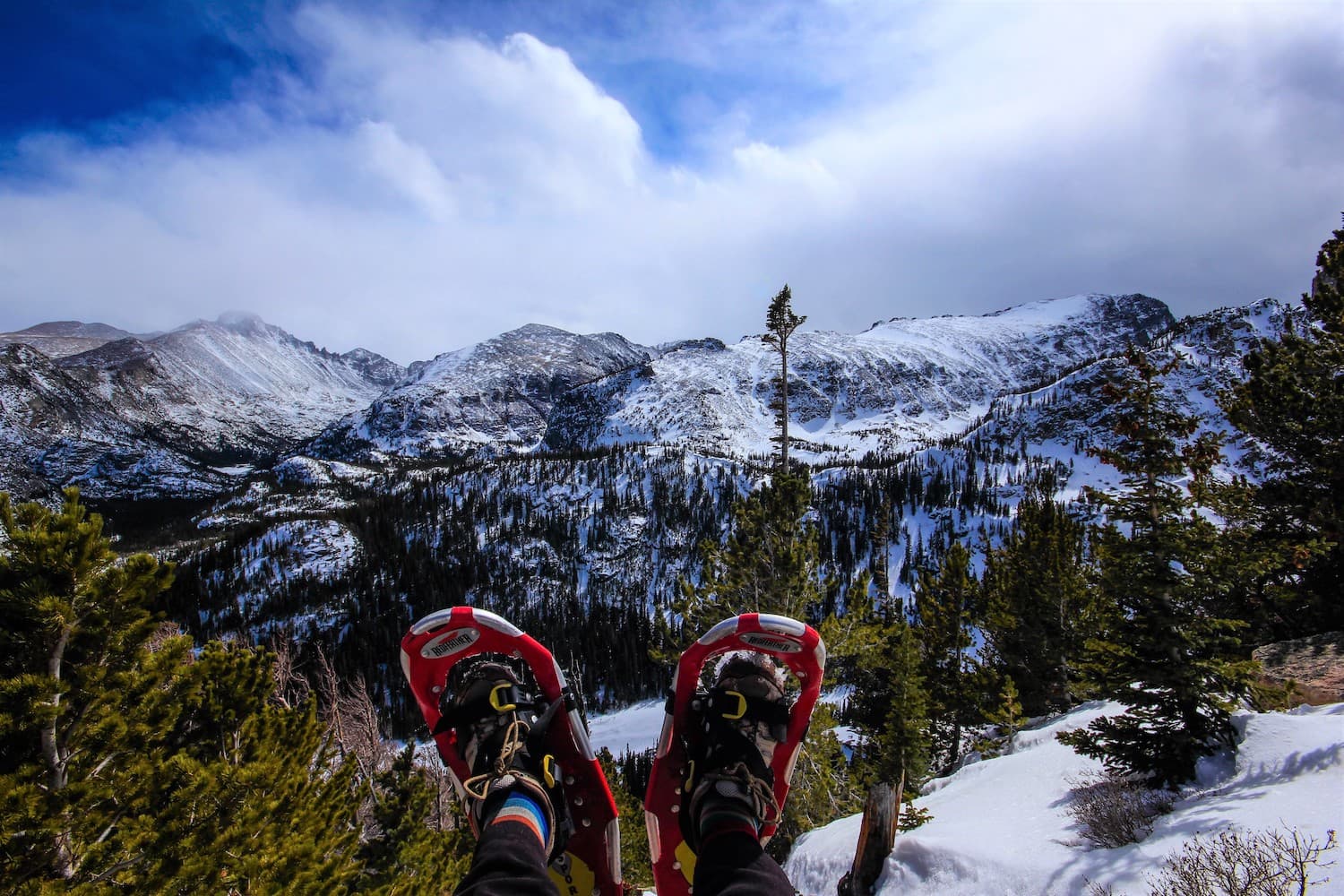
Snowshoes, like the ones seen here hanging over a cliff at Rocky Mountain National Park, are an essential safety tool for deep winter snow while winter RV living.
When the wind is blowing at 30 mph and ice is pelting you, digging through all your gear for that shovel or tire chains is the last thing you’ll want to be doing. As cold weather begins to set in, find these lifesavers and put them in a relatively easy spot to make winter RV living that much safer.
For days with some down time in the snow, we make sure we packed everything we need to have a snow day. We love getting out and playing in the snow, but being strategic about our gear to do this is a must. Snowshoeing is a great way to stay active in winter and tend to be light enough to store around the camper. We also carry snow boots, spoon snow sleds, and a snowboard for some outdoor fun in mountainous areas.
Learn How to Deal with Condensation

Snow piles up on the back end of our camper trailer window, a common occurrence during winter RV living. Image from Shari and Hutch
Both burning propane and respiration gives off moisture, meaning it’s nearly inevitable that our RV will be covered in condensation in the winter months. Each morning before we head out, we open the windows to air out the camper and use a small squeegee to remove the moisture from the inside of windows. Doing this regularly is key to keeping Hamlet mold and mildew free, both the wooden interior and our health thank us in the long run.
Stay Energized (Literally)
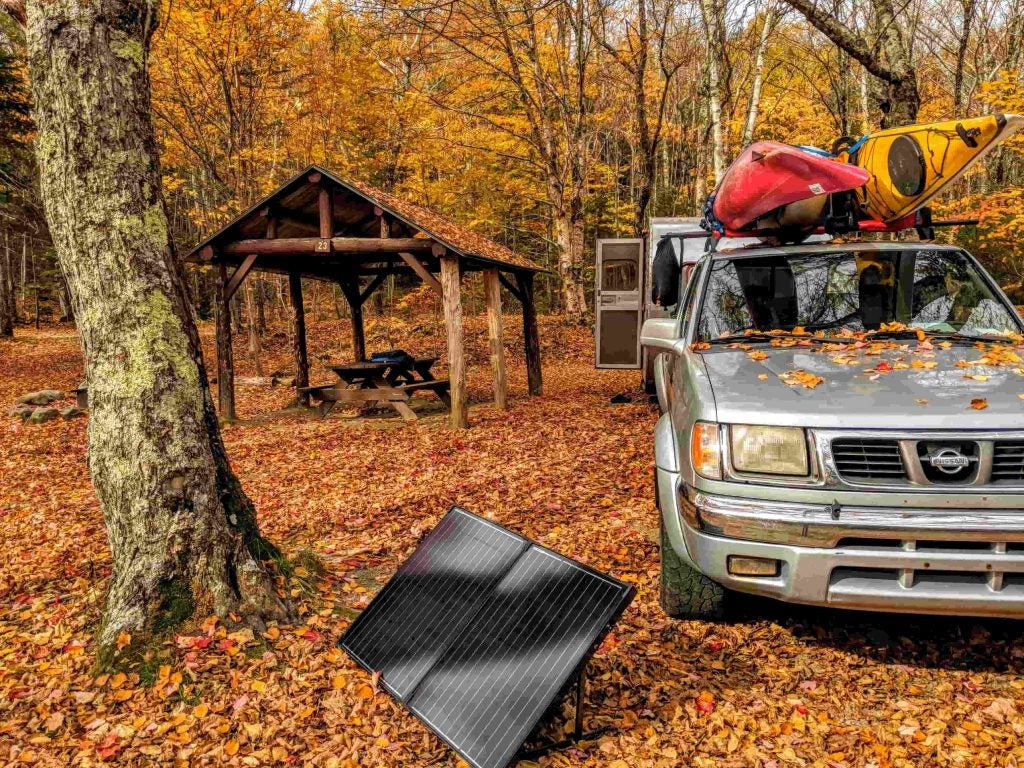
Our solar panel set up at a campground in the fall, providing us with all the energy we need. Image from Shari and Hutch
Using solar is an effective and eco-friendly way to power our camper, but with the sun at a lower angle and less daylight in the winter, we make sure we’re prepared. Our portable Phoenix Generator by Renogy keeps us powered up (we charge it via the 12-volt accessory socket in the truck) when our solar powered system runs low, and as a backup we always keep candles on hand. We also have LED puck lights installed in strategic places in the camper, giving us plenty of light when solar isn’t readily available.

